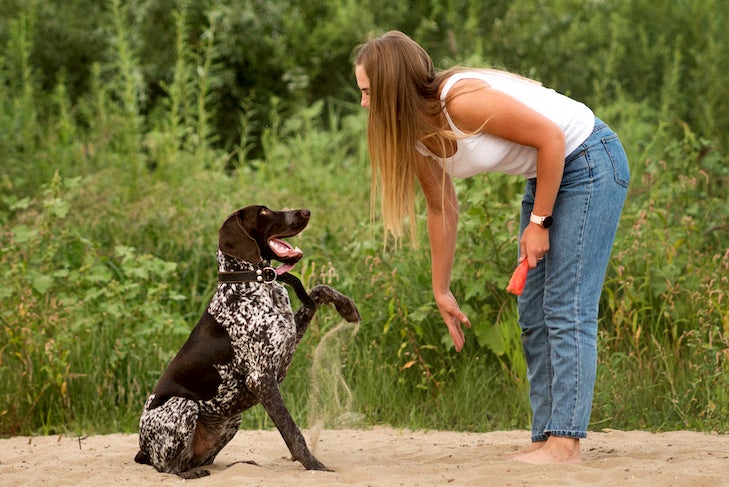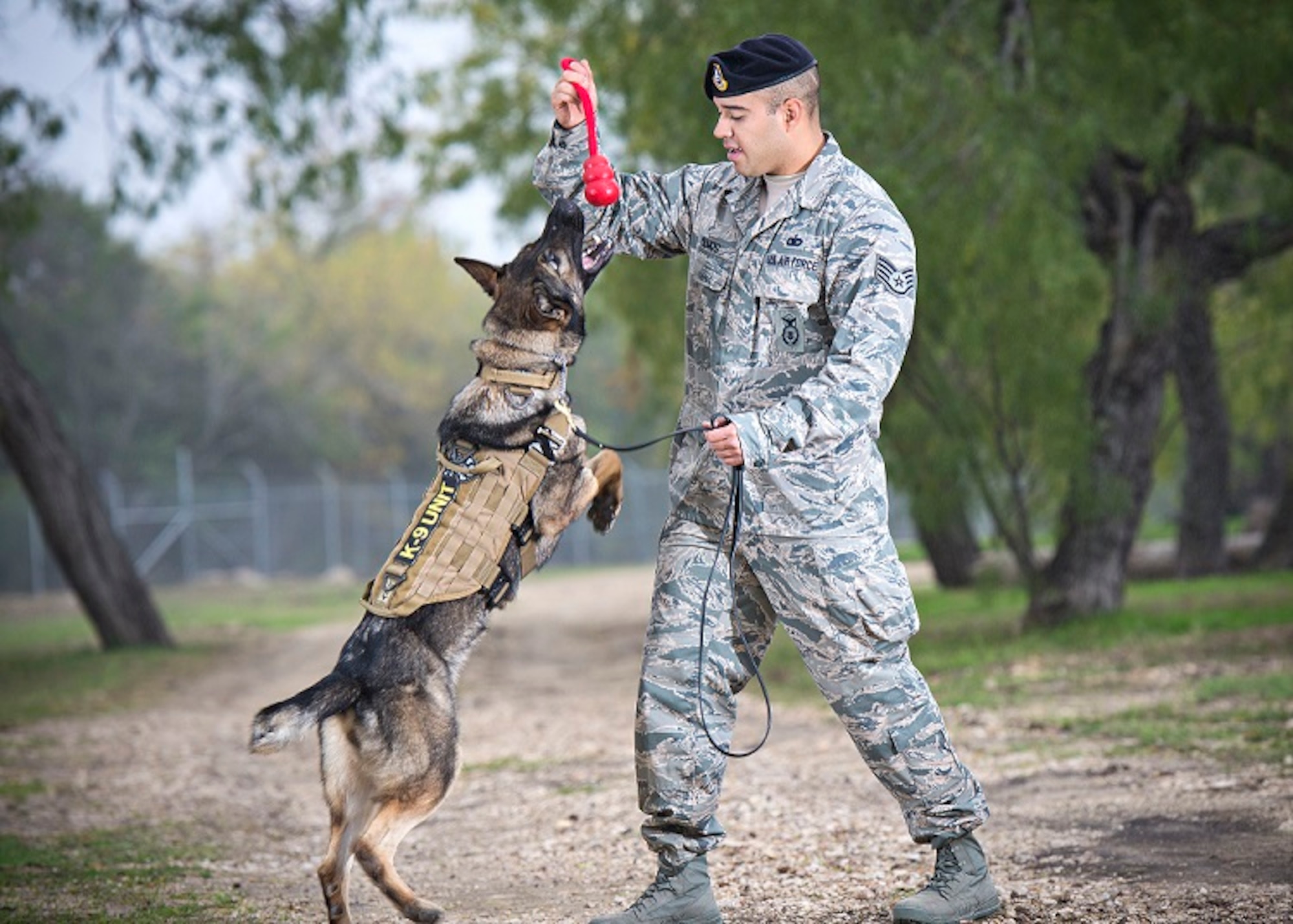Leading Pet Training Techniques Every Owner Need To Know
Understanding effective pet dog training strategies is crucial for any type of pet proprietor intending to cultivate a harmonious partnership with their canine companion. Among the most popular techniques are favorable support, remote control training, and leash training, each offering special advantages that add to a mannerly pet. The success of these techniques typically pivots on the owner's commitment to consistency and patience. As we explore these fundamental strategies, it becomes apparent that grasping their nuances can considerably affect the training experience and the dog's total actions. What are the crucial components that will make sure these methods are executed efficiently?
Positive Support Techniques
Utilizing positive support strategies is important for effective pet training, as it promotes a relying on bond between the trainer and the pet. This technique concentrates on satisfying desirable habits instead than punishing unwanted ones, producing a setting for finding out. Benefits can consist of treats, appreciation, or playtime, which inspire dogs to duplicate the behaviors that gain them these rewards.
Favorable reinforcement is rooted in the concepts of operant conditioning, where actions is influenced by its effects. By regularly satisfying particular activities, trainers can shape a pet's behavior in time. For example, a dog that remains on command and gets a reward is most likely to duplicate that actions in the future.
Furthermore, this strategy boosts the canine's interest for training sessions. They are much more engaged and responsive when dogs link training with positive experiences. Past prompt therapy, positive reinforcement motivates a joint partnership in between the pet and trainer, decreasing stress and anxiety and concern.
To optimize performance, it is essential to provide benefits without delay, ensuring the dog connects the habits with the support. Essentially, favorable reinforcement strategies not just produce better-trained pets yet also advertise an unified partnership in between dog and owner.
Remote Control Training Approach
The remote control training method is a highly reliable strategy that builds on the principles of positive support by adding an unique noise to mark desired actions. This approach uses a small portable gadget that creates a clicking sound, permitting instructors to connect with their pet dogs in a clear and instant manner. When a pet does a behavior that the proprietor wishes to urge, the remote control is turned on, complied with by a reward, usually in the form of deals with or praise.
The trick to successful remote control training depends on consistency and timing. It is vital to click at the precise minute the preferred behavior happens, guaranteeing that the dog connects the sound with the activity and the subsequent incentive. This method not just improves communication however additionally promotes a more powerful bond between the pet dog and the proprietor, as it motivates engagement and communication throughout training sessions.
Remote control training can be related to a selection of commands and habits, from basic obedience to extra complex methods. Its flexibility and efficiency make it a favored method amongst professional fitness instructors and pet dog owners alike, leading the means for a well-trained and responsive canine companion.

Chain Training Basics
Effective chain training is crucial for ensuring a satisfying and safe strolling experience for both pet dogs and their owners. A flat collar might work for some pet dogs, while others may benefit from a harness that minimizes pulling.
Present your pet dog to the leash gradually, enabling them to explore it in a comfortable setting. Once they are accustomed, practice loose-leash strolling. This includes fulfilling your pet for strolling close to you instead of drawing in advance. Use deals with and appreciation to strengthen preferred habits, and make certain to stay assertive and tranquil.
If your pet dog starts to pull, stop strolling promptly. Furthermore, practice numerous strolling environments to help your canine adjust to diversions.
Regular technique will solidify your canine's understanding of chain rules. Keep in mind that leash training is a continuous process; perseverance and uniformity will generate the very best outcomes, cultivating a positive experience for both you and your canine companion.
Socialization Methods
Socializing is a crucial element of pet dog training that ought to ideally start during puppyhood however can be helpful at any kind try these out of age. Reliable socializing helps dogs develop self-confidence and lowers the chance of behavioral problems. To apply successful socialization strategies, expose your canine to a variety of settings, individuals, and other pets.

Start with regulated setups, such as puppy courses or arranged playgroups, where young canines can connect safely. Slowly introduce your pet dog to brand-new experiences, consisting of various sounds, surface areas, and activities. Guarantee these experiences are satisfying and favorable to establish a complacency.
For grown-up dogs or those doing not have exposure, begin with low-stress circumstances. Short, favorable interactions with pleasant people and calm canines can produce positive organizations - Dog training. Utilize deals with and appreciation to enhance preferable behaviors during these experiences
Checking your dog's body movement is necessary; signs of worry or aggression must be dealt with immediately, either by removing the canine from the circumstance or rerouting its focus. Constantly exposing your pet to varied stimuli will foster flexibility, making it a well-rounded friend with the ability of prospering in numerous settings.
Consistency and Persistence
Acknowledging the importance of consistency and perseverance in canine training is important for achieving lasting outcomes. Inconsistent training can lead to complication, making it tough for the canine to realize commands or actions, eventually hindering development.
Dogs, like humans, learn at their own rate. This cultivates a relying on connection between the canine and owner, encouraging an extra enthusiastic and prepared student.
To grow consistency and persistence, develop a routine training routine, make use of visit site the exact same commands, and make certain that all household members apply the exact same training concepts - Dog training. By doing so, you develop a stable atmosphere for finding out, allowing your canine to create and thrive into a well-behaved buddy

Final Thought
Finally, reliable pet training strategies, such as positive reinforcement, remote control training, and proper leash training, are necessary for cultivating a healthy and balanced owner-dog partnership. Furthermore, carrying out check socializing methods and preserving consistency and persistence throughout the training process adds dramatically to a pet dog's general wellness. By integrating these methods, dog proprietors can assist in the development of well-adjusted, loyal animals, inevitably improving the lifestyle for both the pet and the owner.
Amongst the most famous techniques are favorable reinforcement, remote control training, and leash training, each offering one-of-a-kind benefits that add to a well-behaved pet. As we explore these basic methods, it becomes obvious that mastering their nuances can significantly affect the training experience and the pet's general actions.Utilizing favorable support methods is essential for efficient pet training, as it cultivates a trusting bond in between the trainer and the canine.In final thought, reliable dog training methods, such as favorable reinforcement, clicker training, and appropriate chain training, are important for cultivating a healthy and balanced owner-dog relationship. By integrating these approaches, dog owners can assist in the growth of well-adjusted, obedient animals, inevitably improving the high quality of life for both the proprietor and the dog.
Comments on “Dog Training Rochester NY: Tailored Solutions for Every Dog's Needs”